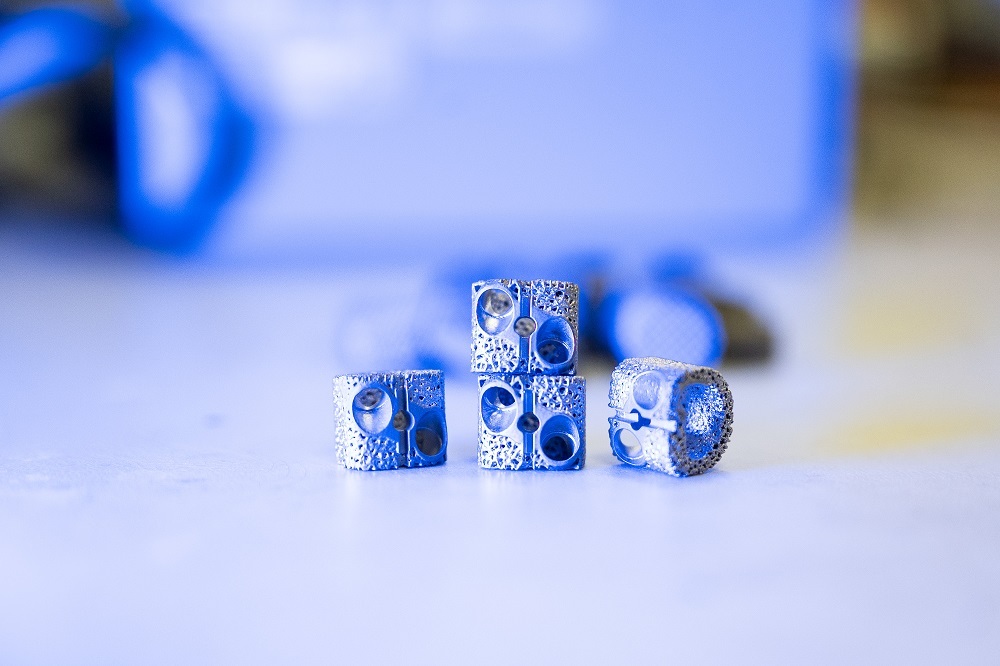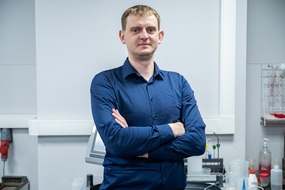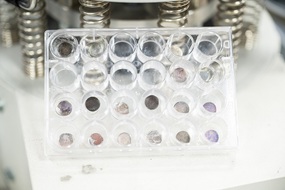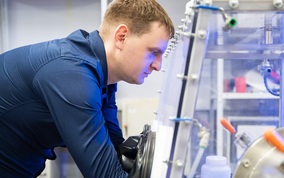Researchers from NUST MISIS have proposed a new two-stage method for modifying alloys, which are promising for manufacturing orthopedic implants that require special mechanical and functional properties. By using atomic layer deposition on the surface of a superelastic Ti-Zr-Nb (titanium-zirconium-niobium) alloy, they were able to obtain an oxide film (TiO₂) that allows for controlling the chemical state of the material. Subsequently, silver nanoparticles were applied to the alloy, significantly increasing the antibacterial activity of the material.
In recent years, metastable titanium alloys have attracted increased attention due to their stiffness, which is close to that of human bone, providing high biomechanical compatibility. Using additive technologies, products with a porous structure can be manufactured from these materials, which can function more effectively in contact with bone tissue. The surface properties of such materials receive significant attention as they largely determine the healing process and increase the implant’s ability to osseointegrate.
“Ti-Zr-Nb alloy has high superelasticity parameters at human body temperature. Thanks to this property, the mechanical behavior of the material is similar to that of bone tissue. However, the multi-component nature of the alloy means that its oxide film also becomes multi-component, making it more difficult to modify. By using atomic layer deposition, we can regulate the composition and chemical state of the surface,” said Anton Konopatsky, Ph.D., senior researcher at the Inorganic Nanomaterials Laboratory at NUST MISIS.
Atomic layer deposition is a well-known and widely used method for controlled formation of a thin oxide film on the surface of an alloy. Coating with predictable thickness and composition helps scientists predict material properties. In addition to biological activity, an implant must prevent and suppress bacterial growth. Various modifications of silver (Ag) are known for their bactericidal properties. Scientists from NUST MISIS experimentally confirmed that adding sodium borohydride to the surface of the modified alloy before immersing it in a silver nitrate solution significantly increases the concentration of Ag ions and gives the material enhanced antibacterial properties. The sample inactivated 75% of Escherichia coli cells. The use of silver nanoparticles not only improved antibacterial properties but also increased control over the release rate of Ag ions, which is critically important for clinical application. The detailed study is described in the Journal of Functional Biomaterials (Q2).
“This study is part of a large scientific project to develop new materials for medical products from Ti-Zr-Nb alloys. The next step will be adapting the proposed approach for modifying the internal surface of porous materials obtained using additive technologies. Based on these materials, personalized orthopedic implants will be created, including cages for intervertebral disc replacement,” noted Vadim Sheremetev, Ph.D., head of the Shape Memory Alloys Laboratory at NUST MISIS.
The work was carried out with financial support from the Russian Science Foundation (project № 22_79_10299) and as part of the implementation of NUST MISIS’s strategic project “Biomedical Materials and Bioengineering” under the Ministry of Science and Higher Education of Russia’s “Priority 2030” program.






